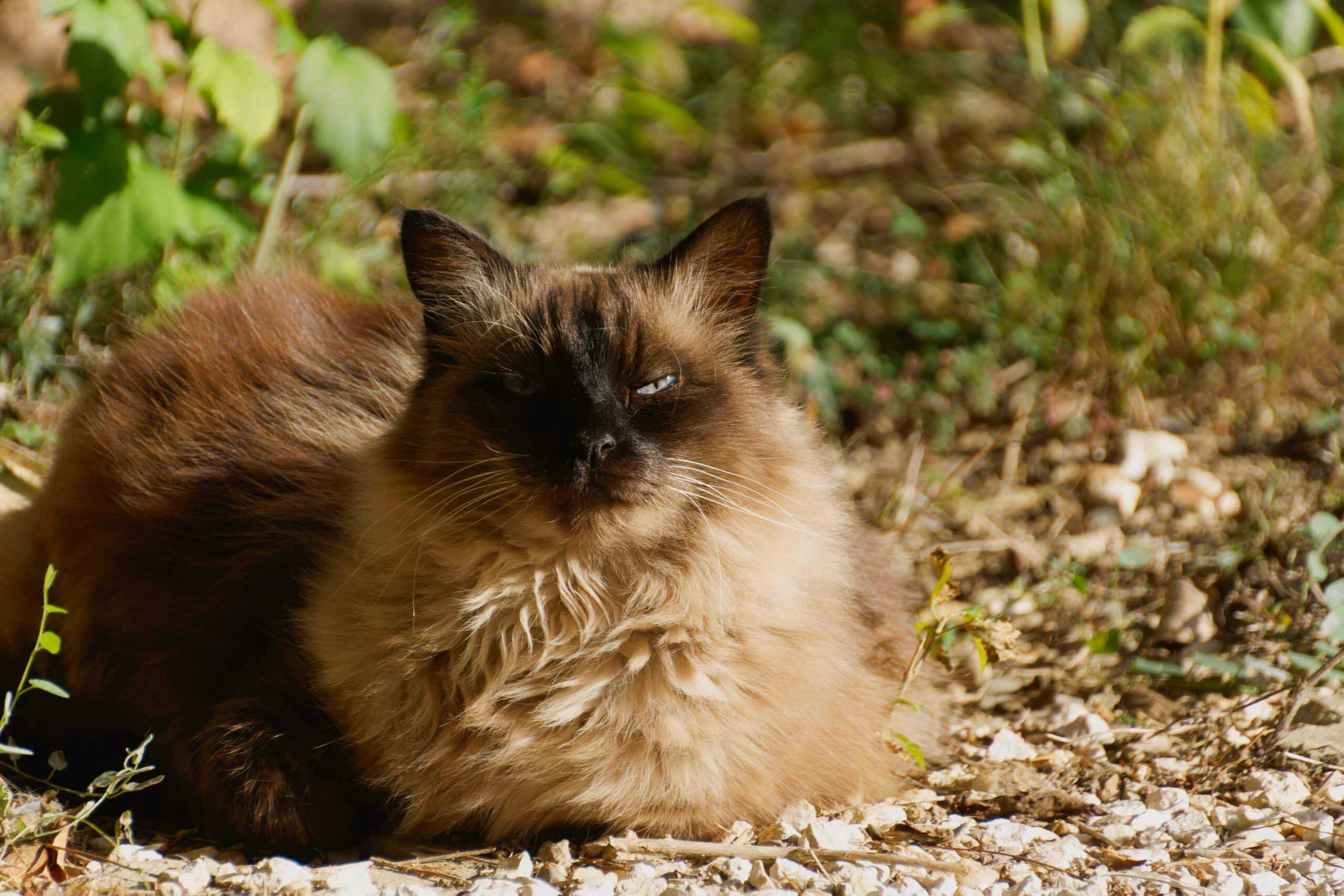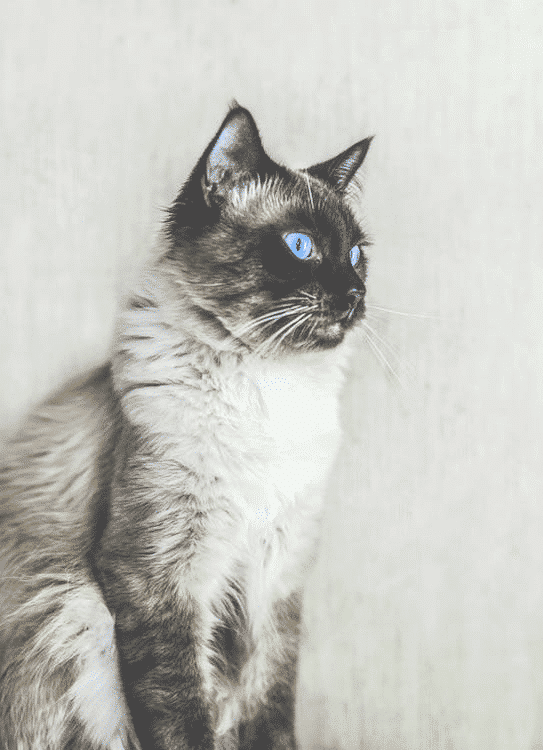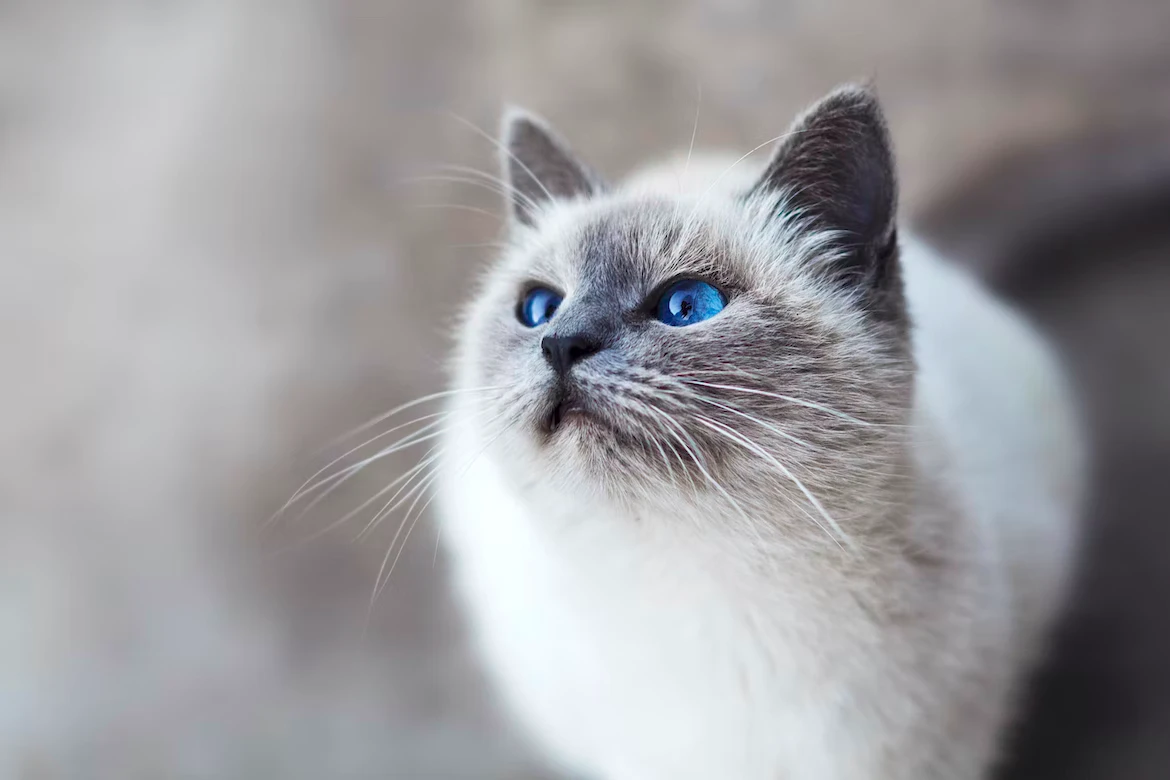Welcome to the cat of Bali: the Balinese Cat!
It is a unique feline breed that has grown popular among pet owners and is a breed of domestic cat originating from the Indonesian island of Bali. This breed was first discovered in the 1950s and has since become popular around Europe and North America.
They were believed to be created by cross-breeding a Siamese cat with a long-haired or Turkish Angora, giving them unique physical characteristics and temperament. But what makes these cats so unique?
In this article, we’ll explore the history of the Balinese cat, its exceptional physical characteristics, and why they make such great pets.

Want to pounce ahead? Click below
Origin

The Balinese cat breed gets its name from its place of origin in Indonesia, specifically Bali. These cats were first recognized as a distinct breed in Bali and gained popularity over time, spreading to different parts of Indonesia. Eventually, they made their way to Europe and North America in the 1950s, becoming sought-after house pets worldwide.
Physical Characteristics Of Balinese Cats

Balinese cats have unique physical traits that set them apart. They have pointed ears, almond-shaped blue eyes, and a tassel-like tail, giving them a distinctive appearance. Their body type is slim and athletic, with a graceful and agile demeanor. They have a soft and silky fur coat in various colors and patterns.
Body Type
Balinese cats have a slim and athletic body type, which gives them a graceful and agile appearance. A muscular neck, large pointed ears, and long, slender legs complement their long, lithe body.
Eyes
The Balinese cat has stunning almond-shaped eyes that are bright blue. This beautiful blue color is due to the presence of the Siamese gene in their genetic makeup.
Coat
The Balinese cat has a soft and silky, fine fur coat. Their skin comes in various colors: seal, chocolate, blue, and lilac. They also have a unique color pattern known as point coloration and long slender tails equal in length to their body.
Facial Features
Balinese cats have triangular-shaped heads with long, slender muzzles. They often have white fur on their chin or chest, which creates a unique upside-down V shape.
Personality Traits Of the Balinese Cat
If you’re looking for a cat with a friendly and loving personality, the Balinese cat is a great choice. They have unique traits that set them apart from other cats.
Intelligence
Balinese cats are highly intelligent and can learn tricks and commands, although they may take a bit longer compared to other breeds. They enjoy games like hide-and-seek or fetch and can be trained to use the litter box and respond to their name.
Playfulness And Affection
Balinese cats are very active and love playing with their owners. They are also extremely loyal and affectionate, following their owners around the house and purring happily while spending time together.
Other Unusual Behaviors
Balinese cats have some interesting behaviors that make them unique. They often head-butt their owners as a sign of affection or to establish territory. They also enjoy playing with water and may join their owners in the shower or splash around in their water dish. Some owners report that these cats are quite vocal and communicate in different tones, almost like having a conversation.
Reasons Why You Should Choose a Balinese Cat As A Pet:
If you’re looking for a beautiful and intelligent pet, the Balinese cat is an excellent choice. Here are some reasons why they make great pets.
- Family-Friendly And Sociable Nature
Balinese cats are known for being friendly and sociable, making them a great fit for any household. They quickly bond with their owners and get along well with other family members and other animals, such as dogs or other cats. They enjoy exploring their surroundings and are playful and affectionate with their owners.
- Low Maintenance Requirements
Balinese cats are relatively low maintenance compared to other breeds. They require moderate grooming, including brushing every few weeks and nail trimmings. Their exercise needs are also minimal as they are more inclined to lounge indoors than run outdoors.
- Easily Trained Without Formal Training
Balinese cats are highly intelligent, making them easy to train without the need for formal training classes. They can quickly learn simple commands and tricks due to their intelligence, making them loyal companions ready to assist whenever needed.
Nutrition Requirements And Dietary Needs
Balinese cats require a balanced diet with high-quality protein and essential fatty acids. Fresh, raw meat, vegetables, and fruits should be included in their diet. They also need taurine and should either receive supplementation or be fed specialized cat food designed to meet their nutritional needs.
Grooming And Exercise Necessities
Regular brushing will keep the Balinese cat’s coat healthy and shiny. They also benefit from exercise, so taking them for walks or setting up an exercise routine is important. Playing with interactive toys or supervised outdoor walks are great ways to provide them with the physical activity they need to stay happy and healthy.
Common Ailments And Health Risks
Balinese cats can be prone to certain genetic health issues such as hip dysplasia, heart problems, periodontal disease, and kidney diseases. Regular vet checkups and vaccinations are essential to catch any health problems early on. Spaying or neutering your Balinese cat can also reduce the risk of certain cancers.
Are Balinese Cats Hypoallergenic?
Contrary to popular belief, Balinese cats are not hypoallergenic. They produce the Fel D1 protein, a common allergen found in cat saliva and dander. However, some people with allergies may be less affected by Balinese cats than other breeds. It is important to consult with an allergist before deciding to bring a Balinese cat into a home with allergies.
Check out The 10 Best Hypoallergenic Cat Breeds for People With Allergies.
Wrapping Up with Balinese Cat
Balinese cats are known for their athletic bodies, vibrant coat colors, and friendly personalities, making them attractive pets for many households. Despite their appealing qualities, they are unfortunately not hypoallergenic, meaning those with allergies should consult an allergist before bringing one into their home.
Thanks for following along with us! Next up, Bengal Cats.
- Watch Hippo Mother Chases Crocodiles To Protect Her Dead Child - April 15, 2024
- Watch Elephants Ask Rescuer To Play Piano - April 12, 2024
- Top Techniques To Cleaning Up Dog Vomit - April 11, 2024


